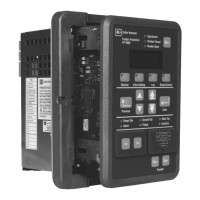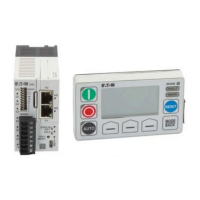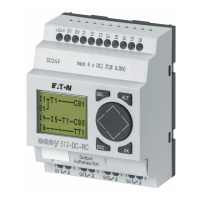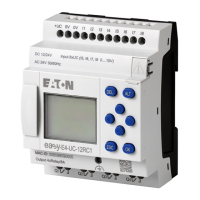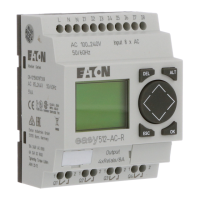I.L. 17562
Page 115
PR 0.3 Effective 8/99
The alarm condition is automatically cleared if the measurement causing the condition falls
below the alarm setpoint. At this time, the Alarm LED and Alarm relay will reset.
All possible alarm conditions are listed in Table 12.1. Related probable causes and solutions are
also shown in this table.
12.2.2 Trip Conditions — A trip condition operates the trip contact; and other contacts
programmed to respond to the particular offending condition. These conditions fall into two
groups:
• When the measurement is greater than the programmed setpoint value. Start delays, and
run or pickup delays, must expire before the function can trip. The red Trip LED lights and a
message appears in the Display Window to assist the operator.
• The MP-3000 may detect a malfunction. Is usually external to the motor control – such as a
broken report-back signal circuit from the machine or process. There are also conditions that
may be internal to the control system, such as a bypass of the trip contact or an MP-3000
internal self-monitoring failure. See Paragraph 12.3).
NOTE
The STEX alarm is conditional. While the motor is running, it is an alarm. If the motor is
stopped before it clears, it becomes a trip. Refer to Sections 5.5.1 and 5.5.2.
Trip conditions have these features:
• A time tag and a listing of the metering values just prior to the occurrence of a trip is stored
in memory and can be recalled by using the Log Mode Display (Table 4.5).
• For IOC and ground fault trips, the offending transient fault overcurrent values are saved in
the log with the time tag.
• The Display Window automatically alternates between the last item displayed and the cause
of the trip condition. If two or more trip conditions occur at the same time, the display
alternates between or among the menu item and the cause of each trip.
• The internal Trip relay is always actuated. The other three output relays may be actuated,
depending on output configuration setpoints and which specific trip occurred.
• The trip condition must be manually reset by using the Reset pushbutton. The remote reset
input (terminal 8), the REMOTE INPUT or INCOM command, can also be used to reset the
trip condition.
NOTE
• A thermal-model trip (I2T trip) cannot be reset until the thermal bucket level drops (cools)
below the I2T alarm setting.
• A trip caused by a jogging function (starts per time exceeded, antibackspin timing, time
between starts) is not cleared by resetting, and counts down with remaining time visible on
the display. The trip then clears itself.
Trip conditions from operating causes or motor problems are listed in Table 12.3. Related
probable causes and solutions are also shown in this table.
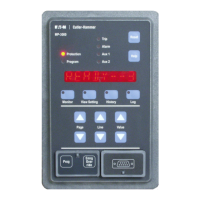
